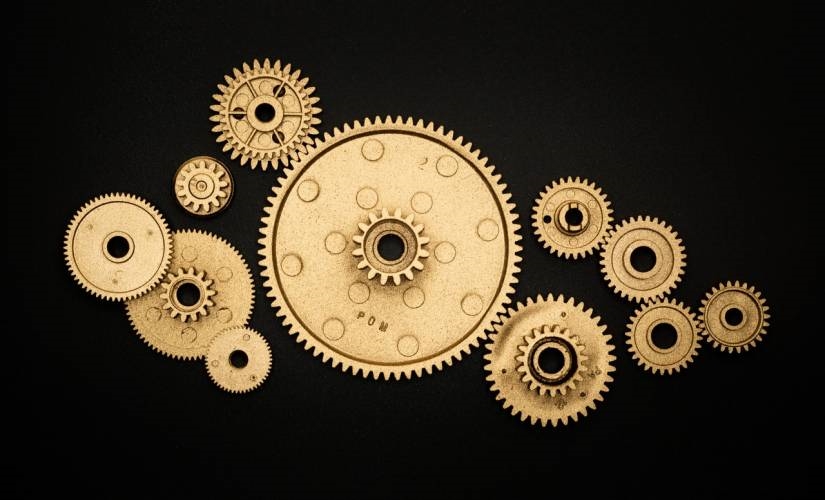Lessons from the Pandemic: Why IoT-Enabled Factories Rebounded so Quickly and How that Sets the Stage for Industry 5.0
Lessons from the Pandemic: Why IoT-Enabled Factories Rebounded so Quickly and How that Sets the Stage for Industry 5.0

Saying the COVID-19 pandemic disrupted manufacturing might be the biggest understatement since “Houston, we have a problem.” But where there are problems, there are opportunities.
The Industrial Internet of Things (IIoT) is key to unlocking many of those opportunities. This includes deeper insights into production and equipment condition, increased efficiency and productivity, greater resilience against disruptions, new business models and more.
In the process, IIoT also lays the foundation for Industry 5.0, which includes “lights out” factories where industrial robots, autonomous material handlers, and other machines will manage themselves — potentially even during major disruptions such as blizzards, hurricanes and pandemics.
“We have vaulted five years forward in business digital adoption in a matter of around eight weeks,” McKinsey said in May. “Manufacturers are actively developing plans for lights out factories and supply chains.”
Rebounding Quickly from Shutdowns
To understand the how and why — first consider all the ways that COVID-19 disrupted the manufacturing ecosystem. For example, in a McKinsey survey of Asian manufacturers:
- 45 percent reported sudden materials shortages.
- 41 percent experienced steep drops in demand.
- 30 percent struggled with employee unavailability.
These kinds of disruptions are especially problematic for manufacturers with lean and just-in-time (JIT) business models. One example is an automaker whose production grinds to a halt when upstream suppliers of brake assemblies and dashboards suddenly can’t deliver on schedule.
Manufacturers that went through digital transformations—often referred to as Industry 4.0—were best prepared to mitigate the pandemic’s disruptions and then rebound quickly.
Even with lockdowns limiting employee access, they were still able to reopen thanks to IIoT. For example, engineers working from home could remotely access IIoT nodes on machinery to restart them, monitor their performance and health as production restarted, troubleshoot them, update their software and more.
None of that would have been possible if they hadn’t invested in IIoT before the pandemic. In fact, it’s reasonable to say that IIoT helped lay the foundation for the global economy’s rebound by enabling the manufacturing ecosystem to restart so quickly.
Work Smarter
IIoT is equally valuable in normal times, too. For example, some IIoT devices are sensors that track vibration, voltage levels, temperature, lubricant viscosity, and other metrics that provide deep insights into equipment health. With this data:
- Engineers can identify emerging problems before they escalate into extensive, expensive damage and downtime.
- Management knows when to shift production to other lines or other plants before that maintenance starts so the company can meet its JIT targets and other goals.
- The plant saves money by ordering replacement parts just in time rather than stockpiling them.
- The company can save money and maximize productivity by performing routine maintenance less frequently: only when the data indicates it’s necessary rather than whenever the vendor’s maintenance schedule recommends it.
- The company can track the uptime, downtime, and maintenance costs for each piece of equipment. So, when it’s time to replace equipment or build another factory, it can make deeply informed purchasing decisions.
IIoT also provides greater control, flexibility, and resiliency for supply chains, including raw materials and finished products.
For example, production managers, supply chain managers, and others can use IIoT to get up-to-the-second inventory data, monitor the status of raw materials in transit, provide customers with real-time status updates and comply with requirements such as chain of custody.
This data also can be stored for future analysis, such as optimizing warehouse space and identify ways to maximize efficiency.
Maximizing Security and Ease of Integration
The business side of manufacturing always recognized these kinds of benefits and embraced IIoT, while their operations peers often were reluctant, with security being a top concern. But IIoT’s benefits don’t have to come at the expense of security.
When it comes to deploying IIoT on the factory floor, wireless is often faster and cheaper than pulling hundreds of miles of cable to each piece of equipment.
Wi-Fi is one wireless option, but manufacturers are increasingly choosing private cellular networks. These provide direct control over bandwidth, data prioritization, signal coverage and other key aspects. Control that would be impossible if they leased service from a mobile operator.
Private 4G LTE networks also are inherently more secure than Wi-Fi.
For example, it’s virtually impossible to eavesdrop on them, so there’s very low risk of industrial espionage. For additional protection, manufacturers also can layer on technologies that isolate their private 4G LTE networks from the internet and restrict access to pre-authorized users.
Another common barrier to IIoT adoption is the perception that it’s difficult to integrate with software such as enterprise resource planning (ERP) and proprietary vendor applications.
Not so. There are IIoT platforms designed to support a wide variety of manufacturing hardware and software so all devices and applications — including those on Amazon, SAP, and IBM Watson — can communicate with one another easily.
These platforms also don’t require custom code, saving time and money during implementation.
These solutions also can help maximize security by protecting old software that vendors no longer support, such as Windows NT, XP, and 2003.
Those capabilities show that IIoT isn’t limited to greenfield factories. It’s equally applicable and beneficial for decades-old equipment, enabling manufacturers to maximize productivity and efficiency of their brownfield plants.
A Bright Future, Even When the Lights are Out
For years, many businesses, including manufacturers, were skeptical about remote work. The pandemic quickly changed that mindset, proving that with the right tools, employees could be just as productive —often even more so.
“Today, we are witnessing what will surely be remembered as a historic deployment of remote work and digital access to services across every domain,” Intel CEO Bob Swan said early on in the pandemic.
The pandemic highlighted the business benefits of engineers using IIoT to remotely manage equipment. These capabilities also can be used during normal times to create new business benefits.
For example, IIoT enables highly-skilled, highly compensated, and often hard-to-find engineers to support multiple plants scattered around a country, region or the world. That’s less expensive and more agile than the traditional model of having one or more on staff at each factory or having them constantly traveling between plants.
IIoT also is ideal for supporting lights-out factories, which go beyond today’s high automation levels into the realm of autonomy.
The lights can be out because, as with data centers, human employees aren’t required most of the time. Instead, the industrial robots, automated material handlers, and other equipment use IIoT to communicate with one another to orchestrate the entire manufacturing process, from the input of raw materials to loading finished products onto trucks.
Lights-out factories are a rarity today, but they’ll be commonplace in Industry 5.0, thanks to advances in IIoT technology.
“That is when machines will make better new machines than humans can, among other things,” says Lee Coulter, IEEE Working Group Chair on Standards for Intelligent Process Automation. “Depending on whose data you like, that’s about 10 years away. Did this pandemic accelerate us toward the already inevitable Industry 5.0? Yes.”
Coulter’s working group is responsible for the IEEE 2755.1-2019 standard, also known as the IEEE Guide for Taxonomy for Intelligent Process Automation Product Features and Functionality.
This standard helps manufacturers understand how to use artificial intelligence, IIoT, and other technologies to enable automated factories.
Another key enabler of Industry 5.0 is 5G cellular. It includes sophisticated new features such as ultra-reliable low-latency communications (URLLC), which provides latencies as low as 1 millisecond and 99.999 percent reliability.
Another valuable feature is network slicing, where resources can be tailored to each application’s unique needs, such as multi-gigabit throughput for downloading CAD files to industrial robots or 1 ms latency for tight coordination between equipment. And as with 4G LTE, manufacturers can choose to operate their own private 5G networks.
Whether it’s Industry 4.0 today or Industry 5.0 tomorrow, IIoT is playing a foundational role in enabling highly nimble, resilient, efficient and productive factories and supply chains. That means a bright future for the global economy.
Image Credit: miguel á padriñá; pexels
The post Lessons from the Pandemic: Why IoT-Enabled Factories Rebounded so Quickly and How that Sets the Stage for Industry 5.0 appeared first on ReadWrite.
(20)


